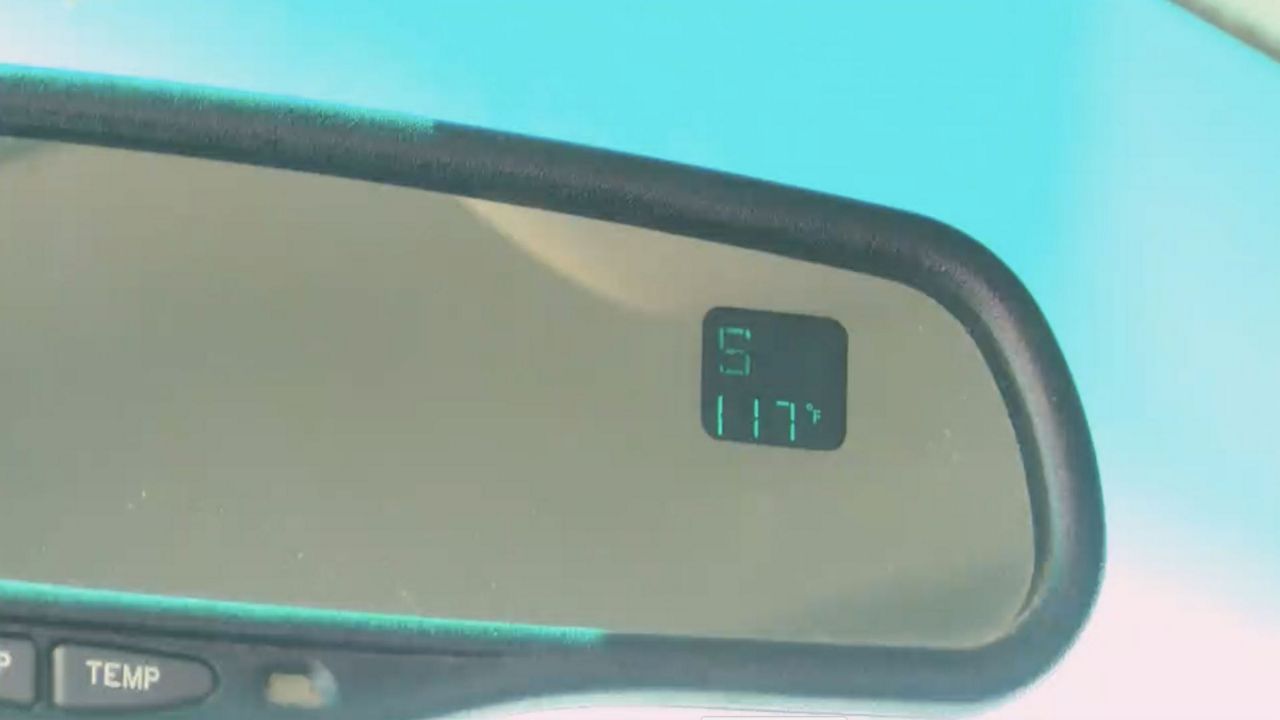LOS ANGELES – How often do you get in your car on a warm day and immediately look at the temperature reading to see how hot it is outside? Probably pretty often.
What You Need To Know
- Temperature reading on car dashboards do not accurately reflect the temperature
- A car does not have a thermometer; instead it has a thermistor
- Thermistors are generally accurate temperature sensors
- Most accurate temperature readings come from official weather stations at airports
Have you ever wondered why the number displayed is so high? Well, it is actually not very accurate, and can be severely skewed from the air temperature outside your car. Let’s explore why.
To start, your car does not actually have a built-in thermometer. It is called a thermistor. You may be asking what the difference is. Usually, temperature is measured with a liquid thermometer. The liquid inside the thermometer expands and rises when heat is added, expressing a certain value. It then contracts and falls when heat is removed, providing a lower value.
In contrast, a thermistor measures the change in electrical current as heat is added or removed. Thermistors in most cars are located behind the grille at the front of the vehicle. Technically speaking, it’s not the thermistor that is the problem -- it’s the location where it sits in the vehicle that causes the inaccuracies.
For starters, the temperature sensor is near the bottom of the car, meaning it can pick up heat from the road’s surface, especially on a sunny day. As the sun warms up the asphalt, the heat radiates off the road’s surface, and the thermistor picks up that inflated heat. Therefore, if a car is parked on asphalt or concrete, the temperature you read is much warmer than what you will see if parked over a grassy or shaded surface.
According to the Lawn Institute, “temperatures over turfed surfaces on a sunny summer day will be 10-14 degrees cooler than over concrete or asphalt.”
Thermistors are actually more accurate during the evening and overnight hours when the sun and daytime heating do not play a role. They are also more accurate on overcast days, since the clouds block the sun from heating the ground as much as on a clear day.
The temperature reading will also change once you start driving the car. The faster you move, the more airflow will run through the grille and sensor. Give it about 10 minutes of drive time, before taking a look at the temperature on the dashboard. This will allow enough airflow through the car, so the sensor can update to a more accurate reading. Compare that to sitting at a standstill in traffic, and you will definitely see a difference.
One thing to keep in mind, though, is that an after-market grille could also skew the sensor. Depending on the design, an add-on grille could partially block the airflow, contributing to the problem. A car’s original grille is designed for more open space and airflow.
Either way, there are just too many variables that negatively impact the temperature reading in cars. Your best bet is to go by official readings at weather stations across the region, which is what our weather team uses at Spectrum News 1. These observation stations are located at airports across the Southland. They are placed in controlled environments following strict criteria to guarantee accuracy.
The standards for an accurate temperature measurement include:
- Placing sensor four to six feet above the ground
- Placing over level terrain in open air for proper ventilation
- Making sure it is at least 100 feet away from any pavement or concrete surfaces
- Making sure it is far enough away from trees, fences, buildings, and any other obstructions
Airports are one of the only locations that can meet these standards, plus they are monitored around the clock. These automated weather stations are also designed for all aviation and meteorological operations, and therefore provide real time information throughout the day.
Next time you step into your car, take the temperature reading with a grain of salt. It is fun to keep track of weather patterns based on the temperature you see on your dashboard, but for the most accurate information, leave it to the official weather stations.
You can find all past and present weather data on the Interactive Observation Map provided by the National Weather Service.



